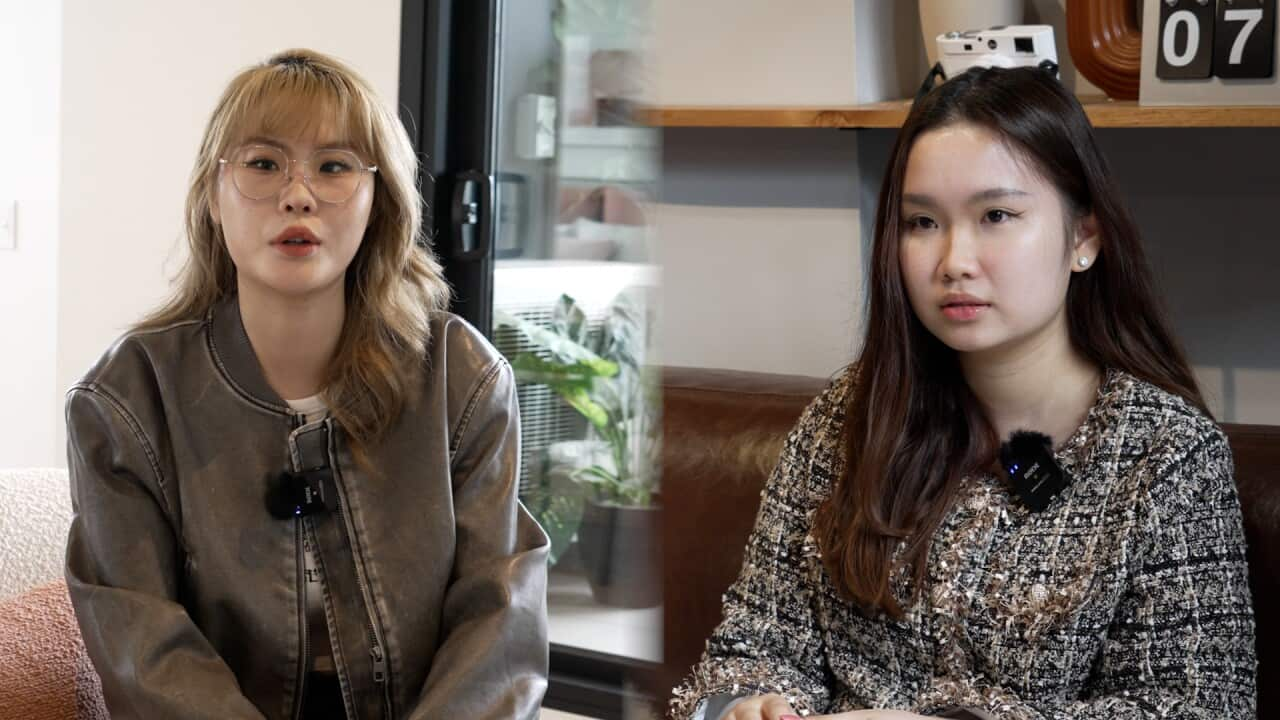Key Points
- Blind Sports Australia (BSA) estimates that there are over 575,000 blind or vision impaired people in Australia.
- The participation of females with disabilities in sports is low, a survey shows.
- Barriers preventing people with disabilities from doing sport include transport, cost, and self-doubt, say experts.
Lei Wu, a 40-year-old Melbourne resident, completed the Melbourne Marathon in four hours and 22 minutes last month.
This is more than 40 minutes slower than his personal best, but nonetheless, he said he felt an unprecedented sense of achievement.
“I heard the most cheers and applause at the track today,” he said.
Reason being is that for the first time in his life, he acted as the 'eyes' for a blind female runner, Huixing Chen, who travelled from Guangzhou, China, to Melbourne for the marathon.
A tether tied around their wrists connected these two athletes who had never met prior to running together in the marathon.
I act as her eyes, and she responds promptly based on the information I provide.Lei Wu, Melbourne Marathon guide

Lei Wu (L) and vision impaired runner Huixing Chen (R) in the Melbourne Marathon in October. Credit: Lei Wu
‘Rabbit’ and ‘bulldozers’
Mr Wu told SBS Chinese that three volunteer running guides played two main roles for Ms Chen during the marathon.
While one person (sometimes informally called a 'rabbit') holds the tether, the other two act as 'bulldozers' to clear the way ahead, letting the front runners know that a blind runner is approaching, Mr Wu told SBS Chinese.
"If I'm holding the rope, I need to make her aware of every step of the way, like how the road is changing, when to accelerate and when there's an incline,” he added.
Ken Ye, who works in IT in Melbourne, was one of the other two guides who mainly served as 'bulldozers' for Ms Chen in the marathon.

Lei Wu (R) and Ken Ye (L) served as guides for visually impaired runners, Huixing Chen (second from R) and Cuifen Ou (second from L), in the Melbourne Marathon. Credit: Lei Wu
To better understand the blind runners, Mr Ye told SBS Chinese that he closed his eyes and ran with someone as his guide.
When you run with your eyes closed, you'll be very scared. You wouldn't know what's in front of you, and you could only rely on your guide.Ken Ye, Melbourne Marathon guide
“You might trip over steps or get a feeling of stepping into a depression unexpectedly if your guide missed something.”
Mr Ye said the experience made him really appreciate what kind of guidance he should provide at what point when he was guiding a blind runner.
“For example, if there is a bump in 10 metres, you need to count down in advance to tell them and give them a sense of what to expect,” he added.
With the assistance of these guides, Ms Chen achieved her personal best marathon record in Melbourne.
"It was my 17th or 18th full marathon, and I completed it in four hours, 22 minutes and 16 seconds, which is my personal best," the 56-year-old who was born blind told SBS Chinese.
She said she could not have finished the run without her guides.
“Things like the roadblocks, the uphills and downhills, it would have been easy to fall if I hadn't been told by the guides (what was ahead),” Ms Chen said.

Runners who are vision impaired and their guides display a special logo on the back of their shirts. Credit: Lei Wu
More participation in 'blind sport' is needed, experts
It is estimated there are more than 575,000 people who are blind or vision impaired currently living in Australia, according to Blind Sports Australia (BSA), a national organisation established in 1980 for blind and vision impaired sports.
In conducted by BSA last year, 85 per cent of the 209 respondents (fully sighted and blind or vision impaired) said they were taking part in sport, as either a player/participant, coach/officer or volunteer.
Of the respondents who were blind or vision impaired, 67 per cent said they participated in a specific blind sport (75 per cent male/57 per cent female), the survey showed.
The survey also suggested that the top five blind sports were running, tennis, , cricket, and cycling.

The BSA survey reported that 21 per cent of people surveyed who were blind or vision impaired did not participate in any sport. Credit: Blind Sports Australia sport participation survey
The founder of Achilles Melbourne, Amanda Kwong, said she believed while some people with disabilities were actively involved in sports, many were "hiding in the dark".
“The participation rate in physical activity in Australia in general in the normal population is pretty low,” she told SBS Chinese.
It's even lower if you have a disability and it's even lower again if you're female and you have a disability.Amanda Kwong, founder of Achilles Melbourne
The most recent Australian Sporting Commission Participation in 2023 reported that four out of 10 Australians aged 15 or over participated in a sport-related activity at least once a week.

Amanda Kwong (R) said some people with disabilities didn't believe that they could do sports. Credit: Amanda Kwong
What stops people from doing sport?
Transport, cost and access to sports equipment are among the barriers that prevented people with disabilities from participating in sports, experts said.
“Three-quarters of people who are blind or vision impaired need transportation to participate in a sport, and the majority (59 per cent) need the support of family, a friend or support worker to get there,” Felicity Wilkeson from BSA told SBS Chinese.
Self-doubt was also one of the major obstacles, Ms Kwong pointed out.
“The other barrier is for people with a disability to (truly) believe that they (are) able to do it,” she said.
Sometimes, it takes them some time to realise in themselves that they can actually get out there and do it.Amanda Kwong
Both Ms Kwong and Ms Wilkeson said they believed that seeing other people with vision impairment play sports could be inspiring and was a great motivator in encouraging others to join in.
“If you can dream about it, you can go out and achieve it, there’s no such word as 'can’t',” BSA Ambassador, Courtney Webeck, said.


